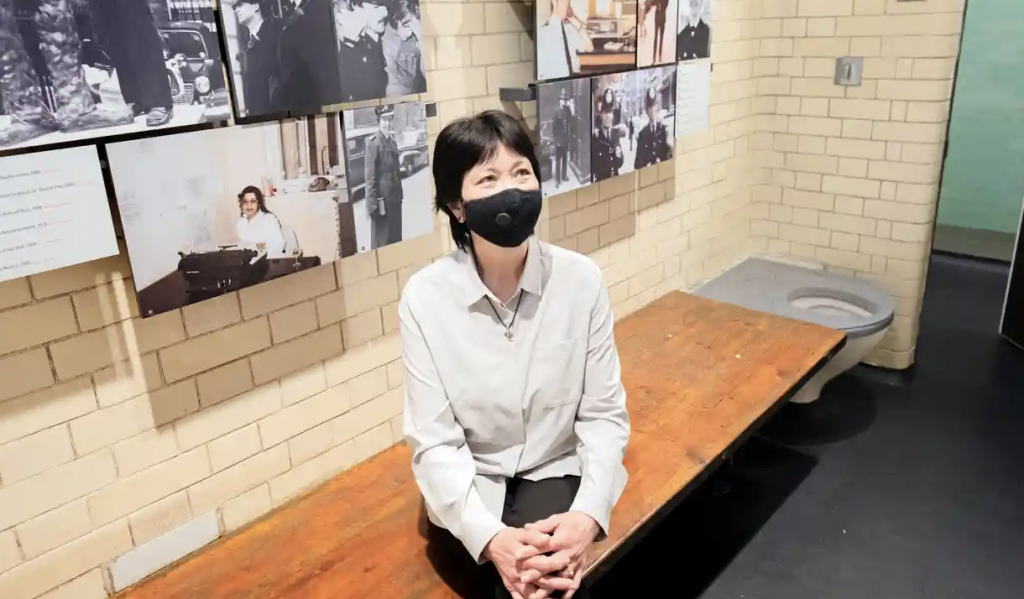‘Not like I remember it’: Bow Street police station reopens as museum

It is the stench that Lee-Jane Yates remembers vividly. “It was so rancid,” she said. But then it was from a small cell that sometimes housed a double-figure number of men, held there overnight after being arrested for drunken behaviour.
Today the cell, nicknamed “the tank”, is clean, odour-free and ready to welcome visitors to the UK’s newest independent museum, one telling the story of Bow Street police station and magistrates court in London.
Yates was a rookie WPC stationed at Bow Street in the early 1980s. “The tank is very different from how I remember it,” she said. “It had its own unique odour and as you walked closer it became even more rancid. I think they got as many people in there as they could.”
Probably the first Chinese woman to serve as an officer in the Metropolitan police, Yates also remembers how useless the truncheons were – much smaller than the ones given to men, so they could fit in a handbag. “The only time I used one was to break into a car.”
Plus the WPC hat was soft, compared with the man’s hard helmet, and they could not wear trousers, she said. While men got a boot allowance, Yates recalls women getting a stocking allowance.
Visitors will be able to see the truncheons as well as report books, whistles, badges and other police memorabilia, which help tell the story of people who worked there.
Another of those was Philip Gough, who was an inspector at Bow Street. He said a working week might involve him organising the policing of gala nights with world leaders at the Royal Opera House opposite, or going out on patrol and dealing with a mass brawl. “When we got back to the station I said: I don’t believe this, I’m 47 years of age and I’m rolling around in the gutter fighting with 21-year-olds.”
The police station and courthouse opened in 1881 with the station closing in 1992 and the court in 2006. In the original men’s cells, curators tell some of the most famous Bow Street stories including suffragette trials and the extradition the former Chilean dictator Augusto Pinochet.
One of the many famous figures to spend a night in the cells was Oscar Wildeafter being arrested at the Cadogan hotel for committing “indecent acts”. He was refused bail by a chief magistrate who told him “there is no worse crime than that [of] which the prisoner is accused”.
Other temporary Bow Street residents include Dr Hawley Crippen, who poisoned his wife; the London gangsters Ronnie and Reggie Kray; and James Earl Ray, who assassinated Martin Luther King. Ray had been arrested at Heathrow airport and was brought to Bow Street where the court was in the unique position of being able to order his extradition to the US.
The museum, which opens to the public on Friday, also tells the story of the Bow Street Runners, the UK’s first organised police force, founded in 1749 and made up mostly of well-connected and corrupt ex-military men.
The project is part of the building’s redevelopment into the luxury NoMad hotel, with the museum operating as an independent charity.
Objects on show include the original dock from court No 2, which was found in a stairwell during the building’s redevelopment. “It seems as if someone was trying to remove it and then gave up because it so heavy,” said the curator Jen Kavanagh. “It was just abandoned so we’re very happy.”
The museum is also planning a regular events and talks programme, which will sometimes address the tougher questions around policing and justice. “We have a really wonderful opportunity to tell lots of different stories from lots of different perspectives in a really open and honest way,” said the museum manager, Vicki Pipe.
Source: (The Guardian)

